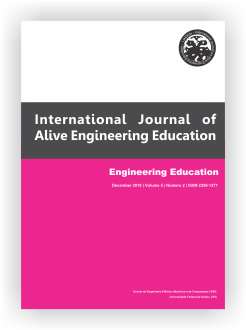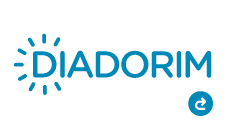Analysis of Engineering Students’ Common difficulties with DC electric circuits in an Inquiry-based laboratory
DOI:
https://doi.org/10.5216/ijaeedu.v5i2.54738Keywords:
Electric circuits, Inquiry, Laboratory, UndergraduateAbstract
The students’ understanding about direct current electric circuits’ concepts has been extensively investigated in secondary schools as well as at university level. In the University of São Paulo (IFSC/USP), for more than 10 years, our group has been researching the Electricity and Magnetism laboratory course to Engineering students’. Similarly to reported in the literature, we observed that students often leave physics classes with less of an understanding of physics concepts than we had expected. In this paper we present an investigation of the difficulties that students in the Electricity and Magnetism laboratory have with current electric circuits' concepts and how that research was used as a guide in the development and evaluation of the guided-inquiry lab on these topics to help students learn these concepts better. Initially, we adapted a question developed by McDermott in 2006 and employed it to investigate students’ conceptual understanding of electric circuits in three states of Brazil. STEM areas were involved in this research and the question was applied after students attended to theoretical and laboratory courses. Students had to order light bulbs according to brightness in three different electric circuits to answer the question. Only ~13% of students answered correctly agree to result in other countries and it inspired us to restructure the laboratory guide from a course in our institution. Our new guide was inquiry-based with some activities adapted from Tutorials in Introductory Physics and others developed in a prediction-observation-explanation form. The same question was used as pre and post-test and the average percentage of students who got the maximum score was 47%. We also have been using the Determining and Interpreting Resistive Electric Circuit Concepts Test (DIRECT), which is composed by a 29-multiple choice questions, that can be grouped in conceptual objectives, allowing us identifying specific conceptual difficulties. We proposed many modifications in the students’ guide, after analyzing the questions, and some of them we managed to improve, like those related to resistance and current. On the other hand, less than 50% of students could answer correctly some questions related to the concepts of power and voltage in the post-test, even after our efforts to improve learning in this aspect. We have been able to help students overcome known conceptual difficulties with the proposal of new activities, but some difficulties still a challenge to be outgrown. This fact has shown us that research for improving practice is fundamental to overcome persisting difficulties and is a long-term and constant action. Also, using different resources such as homework activities on the internet, videos and computer simulations have shown to be useful tools as supplement materials.
References
MCDERMOTT, L.C.; SHAFFER, P.S. Research as a guide to curriculum development: an example from introductory electricity. Part I: investigation of student understanding. American Journal of Physics, 60(11), 994-1003, 1992.
DUIT, R., & VON RHÖNECK, C. Learning and understanding key concepts of electricity. Connecting Research In Physics Education with Teacher Education, 1-6, 1997.
ENGELHARDT, P.V.,BEICHNER, R.J. Students’ understanding of direct current resistive electrical circuits, American Journal of Physics, 72(1), 98–115. 2004.
BRADLEY J. D. (2001). UNESCO/IUPAC-CTC Global Program in Microchemistry, Pure and Applied Chemistry, 73,1215-1219, 2007.
PLANINIC, M. Assessment of difficulties of some conceptual areas from electricity and magnetism using the Conceptual Survey of Electricity and Magnetism. American Journal of Physics, 74(12), 1143-1148. 2006.
BLANTON, P. Developing an inquiry lesson, Physics Teacher, 45(1), 56-57. 2007
MARUŠI?, M.; SLIŠKO, J. Influence of Three Different Methods of Teaching Physics on the Gain in Students' Development of Reasoning. International Journal of Science Education. 34(2), 301–326. 2012.
BRASIL, CNE/CES 11, de 11 de março de 2002, que institui as Diretrizes Curriculares Nacionais do Curso de Graduação em Engenharia, (Ministério da Educação, Brasília, 2002). Disponível em: <http://portal.mec.gov.br/cne/arquivos/pdf/CES112002.pdf >. Acessed on 04 may. 2018.
MCDERMOTT, L.C.; SHAFFER, P.S.Tutorials in Introductory Physics. New Jersey: Prentice-Hall. 2002.
SANCHES, V.T.; SANTOS, J.F.M.; COSTA, G.G.G.; CATUNDA, T.; Analysis of an Inquiry-based laboratory for undergraduate students. 2nd World Conference on Physics Education (WCPE).Procedings... São Paulo – 2016.
SANCHES, V.T.; COSTA, G.G.G.; SANTOS, J.F.M.,CATUNDA, T.. Estudo das principais dificuldades dos alunos em um laboratório investigativo de eletricidade. . In: Simpósio Nacional de Ensino de Física, 22, 2017, São Carlos. Resumos... São Carlos, 2017.
SANTOS, J.F.M.; COSTA, G.G.G.; CATUNDA, T.; Análise da inserção de atividades investigativas nas aulas experimentais em um curso de eletricidade e magnetismo no ensino superior. In: Simpósio Nacional de Ensino de Física, 20, 2013, São Paulo. Resumos... São Paulo, 2013.
Downloads
Published
Issue
Section
License
Copyright
The author is responsible for the following statements by submitting an article electronically in the International Journal of Alive Engineering Education (IJAEEdu):
a) States that the document in question was reviewed by an expert in English language and it is an original work and it holds the prerogative to grant the rights contained in this license. It also states that the document does not infringe, as far as it is possible to know the rights of any other person or entity.
b) If the document in question contains material which does not hold the copyright, the author states have obtained the copyright holder’s permission to grant the Universidade Federal de Goiás (UFG) the rights required by this license, and that such material whose rights are third is clearly identified and acknowledged within the text or content of the document.
c) States that the study was conducted in accordance with the ethical standards of all applicable institutional, local, national and international guidelines.
d) It also states that any person appointed as author or co-author of the document is aware of it and agrees to be so appointed.
Authorization Form
As responsible for the submission of the document, I authorize the School of Electrical, Mechanical and Computer Engineering of the Federal University of Goiás to provide the paper free of charge, through the Electronic System for Publishing Magazines UFG (SEER / UFG) or in printed form, without compensation of copyright, in accordance with Law No. 9610/98. Is allowed, reading, printing and / or download, as a promotion of the Brazilian scientific production. Any use of the work not authorized under this license or the copyright law is prohibited.



